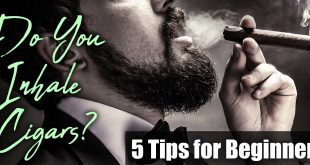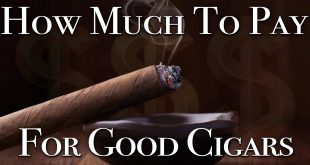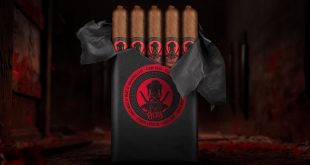The Origin Story of Nicaraguan Cigars
The Cuban Revolution of 1959 and subsequent U.S. trade embargo brought dramatic change into the lives of the Cuban people. Tobacco cultivation and cigar production were a generational tradition and an important part of the island’s economy. But tobacco growers and Cuban cigar makers were faced with difficult choices. Remain in their homeland and accept the limitations of living in an oppressive, one-party communist state and the loss of access to their biggest trading partner? Or leave the land they had called home for dozens of generations? Many, if not most made the choice to flee. Seeking freedom and prosperity for their families and future generations and the continuance of their craft, most fled to the nearby nations which offered similar climate, soil and culture. It was the logical choice. Many went to The Dominican Republic, as we saw in our previous article. Many went to the U.S., like Arturo Fuente (the family later went to The D.R.). But many Cuban cigar makers and growers ended up in Nicaragua sooner or later.
Why Nicaraguan Cigars?
Cuban émigrés found the rich, sandy soil of northern and central Nicaraguan enclaves like Jalapa and Ometepe ideal for tobacco cultivation. Nicaragua was no stranger to growing tobacco. It had been grown there for cigarette production for years. But the recent Cuban arrivals were about to step things up. In the beginning, there were enough Cuban growers, but not enough boncheros or torcedors. So early on, Nicaraguan cigar tobacco was grown mostly for export to places like Miami, where there were enough Cubans with the requisite skills to handcraft fine cigars. It would be tested by years of political instability and violence throughout the 70s and 80s. Once again, the now Nicaraguan cigar makers were faced with the burden of a U.S. embargo like they faced in Cuba. Eventually the Sandinista government faded out of power in 1990 and trade with the U.S. was free to resume. The Nicaraguan cigar industry was a star on the rise. The city of Estelí eventually became the Nicaraguan cigar capital and it remains so today. Brands like Nicaragua’s oldest, Joya de Nicaragua as well as Padrón, My Father, Drew Estate, Tatuaje, AJ Fernandez, Ashton, Aganorsa Leaf, Perdomo and dozens more all played a part in the Nicaraguan cigar story.
Some Nicaraguan Cigars We Love
Truth told, this could be a very, very long list. For this article though, we’ve chosen to try and boil our list down to include some fresh new options, storied classics and standard bearers. We’re making sure to include plenty of cigars you can actually buy today too so we don’t leave you pining for the unobtainable. With that, let’s dig in. These are in no particular order, but we think almost everyone will find a few below that pique their interest. If you’re new to Nicaraguan cigars, any one of these will be an excellent introduction to the breed.
The Pope of Greenwich Village 2022 – Smoke Inn Exclusive
The product of Smoke Inn’s partnership with Drew Estate, we’re especially proud of The Pope of Greenwich Village. Drew Estate Master Blender, Willy Herrera took lead tapping into Drew Estate’s famed tobacco vaults in Nicaragua, Brazil, and the Connecticut River Valley and topping the multinational recipe with a toothy Mexican San Andrés wrapper. These masterpiece Nicaraguan cigars are rolled in an elegant 6″ x 40 panatela format, a vitola rarely seen from Drew Estate. The Pope of Greenwich Village now returns in its original size and format for the 2022 season, being limited to only 800 bundles of 10 cigars. But while the experience holds true, the cigars boast an all-new bundle design. The imagery of the pigeon, one of Manhattan’s best-known residents is the 2022 release signifier.
Joya de Nicaragua Cuatro Cinco TAA Exclusive
A new arrival is the Joya de Nicaragua Cuatro Cinco Edición Americana TAA Exclusive. An exclusive Nicaraguan cigar from the islands elder statesman of cigar makers is sure to garner attention and it is well-deserved. Joya’s Cuatro Cinco brand first debuted in 2013 as a limited-edition cigar, made to commemorate Joya’s milestone 45th anniversary. Of all the Cuatro Cincos, Joya’s Edición Americana TAA Exclusive is the blend most similar to the beloved 2013 original release.
Joya de Nicaragua Cuatro Cinco Edición Americana TAA Exclusive is limited to 500 boxes of 10 cigars, each numbered on a plaque that is displayed on the boxes’ lids. The cigars make use of a dark Nicaraguan Criollo wrapper and Grade-A fillers, being finished in white oak barrels formerly containing rum for a minimum of one year. The result is a full-bodied smoke and rich flavors of earth, charred oak, leather, and sweet molasses.
Drew Estate Nica Rustica Adobe
Another Nicaraguan cigar we love is the Habano-wrapped Drew Estate Nica Rustica Adobe cigar. The brand first launched in 2013, with Drew Estate paying homage to Nicaraguan heritage throughout the cigar’s packaging. This included the iconic El Brujito graphic, an image of a shaman that was carved in stone by pre-Colombian indigenous people living near Estelí more than 6,000 years ago. The Nica Rustica has long been known for offering Drew Estate’s popular Broadleaf style in a rustic profile while maintaining a price point accessible to the everyday cigar enthusiast. With the Nica Rustica Adobe cigar, these themes carry over, now showcasing the zesty characteristics of a classic Habano. The Nica Rustica Adobe begins with a Habano wrapper, which is secured over a Brazilian binder and Nicaraguan filler tobaccos from Estelí and Jalapa. Like the original Nica Rustica, the teal-colored Nica Rustica Adobe takes on a rustic, down-to-earth experience, offering up medium-bodied and easily approachable flavors of cabinet spice, cedar, toasted bread, and touches of caramel.
Padron 1964 Anniversary Series
A list of fine Nicaraguan cigars didn’t seem right without a Padron on the list, so we’re giving our nod to the illustrious Padron 1964 Anniversary Series Maduro. It’s not only a fine Nicaraguan cigar, but it’s a puro at that with all-Nicaraguan tobaccos from head to tail. It’s been racking up 90+ point reviews since it’s debut and we’re not even a little surprised. Rolled and box-press masterpieces built true to the traditional Cuban craft. The Padron 1964 Maduro is passionately sought after and considered a gold standard among Nicaraguan cigars. It is a full-bodied masterwork. Silky smooth with a spicy finish and wood and rich natural leather flavors.
San Cristobal Quintessence
The San Cristobal Quintessence comes from Ashton who has been creating highly acclaimed cigars in Nicaragua since the early 2000s. Ashton collaborated with the famed García family, of My Father Cigars, to bring their vision to life. In 2016, Ashton and the García’s brought us their quintessential smoking experience in the San Cristobal Quintessence. Critics agreed, with Cigar Aficionado ranking the cigar among their Top 25 in 2018 and the No. 3 Cigar of the Year for 2021.
San Cristobal Quintessence is rolled at the acclaimed My Father Cigars factory in Nicaragua, boasting aged Nicaraguan tobaccos throughout the binder and filler and a high-priming Habano-seed wrapper from Ecuador. This gives the cigar’s performance a classic feel with added punch, kicking off with zesty notes of cabinet spices and cedar and opening up to include freshly roasted coffee beans, buttered toast, and sweet molasses.
Tatuaje La Riqueza SE 2022
For years, Tatuaje’s La Riqueza line was a staple in humidors across the country, offering a quintessential Nicaraguan smoking experience at a price that couldn’t be ignored. But it dropped off the radar about 5 years ago. So we were thrilled when a tweaked version of the La Riqueza cigar blend resurfaced in a limited-edition 2022 release. La Riqueza (Spanish for The Wealth) is rolled by the famed García family at their My Father Cigars factory in Estelí, Nicaragua in a singular 5⅝” x 54 format, deemed the ideal shape to handle the modified blend. As with the original, this blend boasts all-Nicaraguan fillers and double binder, joined by a Connecticut Broadleaf maduro wrapper. The proportions and primings have been tweaked to allow for a stronger overall performance. The Tatuaje La Riqueza Special Edition 2022 is limited to 4,500 boxes of 10 cigars. The best part (aside from the smoking experience itself)? This bad boy may be the catalyst needed to bring La Riqueza back, full time. Just don’t miss this rare chance to experience this beefed-up version of the Riqueza, hitting the palate with a medium-full body and gritty flavors of earth, punchy cocoa, bittersweet espresso, and enough black pepper to tie it all together.
Smoke Inn is Your Cigar Place
Your local cigar place is more than just a spot to grab some cigars and go. If they’re doing it right, and we believe we are, then there is a sense of atmosphere there. Your cigar place should have a vibe that makes you happy to be there and want to spend some time. We hope you enjoyed our look at Nicaraguan cigars and some of our favorite examples. There’s simply no way we could do this subject justice in a single blog, so if there were any glaring omissions in your view, rest assured this won’t be the last time we take a trip to Nicaragua on these pages. We’ll also be following up with a look at a few other regions famous for cigar making and touch on their history and some examples of a few of our favorite products from them. Smoke Inn has some very cool stuff in store for you all in the second half of 2022, so stick around and we’ll see you at the bar.
As always, if you’re local or happen to be visiting South Florida, be sure to reward yourself with a visit to one of the country’s best cigar shops in person. We’d love to see you.
Our South Florida Locations:
 Smoke Inn Blog
Smoke Inn Blog



